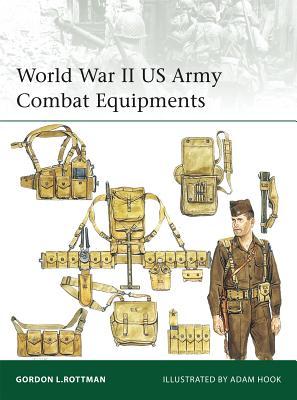


Books in series

The Paras 1940-1984
1984

The US Marine Corps since 1945
1992

The Vikings
1985

US Army Special Forces
1952-84
1985

Soviet Bloc Elite Forces
1985

French Foreign Legion Paratroops
1985

The Ancient Greeks
1986

Israeli Defence Forces since 1973
1986

The Normans
1987

Warsaw Pact Ground Forces
1987

Ardennes 1944 Peiper & Skorzeny
1987

Inside the Soviet Army
1987

US Army Rangers & LRRP Units 1942-1987
1987

The British Army in the 1980s
1988

The Armada Campaign 1588
1988

NATO Armies Today
1988

Knights at Tournament
1992

Israeli Elite Units since 1948
1987

The Crusades
1988

Inside the US Army
1988

Natal and the Zulu country
1989

World Special Forces Insignia
1989

Samurai 1550-1600
1989

Samurai 1550–1600
1994

The Old Contemptibles
1989

Soldiers of the English Civil War (1)
Infantry
1989

Tank War-Central Front
1989

Soldiers of the English Civil War (2)
Cavalry
1990

Medieval Siege Warfare
1990

Vietnam Airborne
1990

Attila and the Nomad Hordes
1990

US Army Airborne 1940-90
1990

British Forces in Zululand 1879
1991

Afrikakorps 1941-43
1991

Early Samurai AD 200-1500
1991

The Texas Rangers
1991

Panama 1989-90
1991

The NVA and Viet Cong
1992

The Ancient Assyrians
1992

New Kingdom Egypt
1992

Elite Forces of India and Pakistan
1992

The Persian Army 560-330 BCE
1992

Vietnam Marines 1965–73
1992

Security Forces in Northern Ireland 1969-92
1993

Armies of the Gulf War
1993

South African Special Forces
1993

Nelson's Navy
1993

The Gurkhas
1993

The Praetorian Guard
1994

US Army Air Force (2)
1994

Wellington's Foot Guards
1994

International Brigades in Spain 1936-39
1994

UN Forces 1948-94
1994

Marine Recon 1940–90
1994

Scottish Divisions in the World Wars
1995

The Royal Marines 1939–93
1995

The Janissaries
1995

US Marine Corps 1941-1945
1995

U-Boat Crews 1914-45
1995

American Civil War Zouaves
1996

German Mountain & Ski Troops, 1939-45
1996

Army Commandos 1940-45
1996

Redcaps
Britain's Military Police
1997

The Spartan Army
1998

Pirates 1660-1730
1998

The Military Sniper since 1914
2001

Buccaneers, 1620-1700
2000

Elizabethan Sea Dogs 1560-1605
2000

Queen Victoria's Commanders
2000

Napoleon's Commanders (1)
c.1792-1809
2001

Privateers & Pirates 1730-1830
2001

The German Freikorps 1918-23
2001

World War I Trench Warfare (1)
1914-16
2002

The Royal Navy 1939–45
2001

Samurai Heraldry
2002

Napoleon's Commanders (2)
c.1809-15
2002

World War I Trench Warfare (2)
1916-18
2002

Heroines of the Soviet Union 1941-45
2003

US Army Frontier Scouts 1840–1921
2003

American War of Independence Commanders
2003

American Frontier Lawmen 1850-1930
2005

Elite 97
The Kaiser's Warlords
2003

British Commanders of World War II
2003

Italian Army Elite Units & Special Forces 1940-43
2011

World War II Axis Booby Traps and Sabotage Tactics
2009

Austrian Commanders of the Napoleonic Wars 1792–1815
2004

Santa Anna's Mexican Army 1821-48
2004

Vietnam ANZACs
2004

Britain's Air Defences 1939-45
2004

World War II Infantry Tactics
Squad and Platoon
2004

Wehrmacht Combat Helmets 1933–45
2004

Buffalo Soldiers 1866–91
2004

Spanish Guerrillas in the Peninsular War 1808-14
2004

The British Home Front 1939–45
2005

Sassanian Elite Cavalry AD 224-642
2005

Heroes of the Soviet Union 1941-45
2004

American Civil War Marines 1861–65
2004

US Navy SEALs
2005

US World War II Amphibious Tactics
Army & Marine Corps, Pacific Theater
2004

Apache Tactics 1830-86
2012

Mounted Archers of the Steppe 600 BC-AD 1300
2004

Ancient Siege Warfare
Persians, Greeks, Carthaginians and Romans 546-146 BC
2005

World War II Infantry Tactics
Company and Battalion
2004

Knight's Cross and Oak-Leaves Recipients 1941–45
2005

World War II Infantry Anti-Tank Tactics
2005

Samurai Commanders (1)
940-1576
2005

Siege Warfare in the Roman World
146 BC - AD 378
2005

Japanese Paratroop Forces of World War II
2005

Samurai Commanders (2)
1577-1638
2005

World War II US Cavalry Groups
European Theater
2012

The Mycenaeans c.1650-1100 BC
2005

The Condor Legion
German Troops in the Spanish Civil War
2006

Knight's Cross, Oak-Leaves and Swords Recipients 1941-45
2005

Buffalo Soldiers 1892–1918
2005

World War II Airborne Warfare Tactics
2006

The Mexican Revolution 1910-1920
2006

The Yugoslav Wars (1)
Slovenia & Croatia 1991-95
2006

Knight's Cross with Diamonds Recipients
1941-45
2006

Finland at War 1939-45
2006

No.10 (Inter-Allied) Commando 1942–45
Britain's Secret Commando
2006

Canadian Airborne Forces since 1942
2006

US World War II Amphibious Tactics
Mediterranean & European Theaters
2006

First Special Service Force 1942-44
2006

The Yugoslav Wars (2)
Bosnia, Kosovo, and Macedonia 1992-2001
2006

The Hungarian Revolution 1956
2006

The Scottish Jacobite Army 1745-46
2006

World War I Gas Warfare Tactics and Equipment
2007

World War II Jungle Warfare Tactics
2007

The British Reconnaissance Corps in World War II
2007

The Australian Army in World War II
2007

Vietnam Airmobile Warfare Tactics
2007

Roman Battle Tactics 109 BC-AD 313
2007

World War II Combat Reconnaissance Tactics
2007

African American Troops in World War II
2007

French Napoleonic Infantry Tactics 1792-1815
2007

World War II Infantry Assault Tactics
2008

World War II Desert Tactics
2008

Special Operations Forces in Afghanistan
2008

British Napoleonic Infantry Tactics, 1792-1815
2008

The British Fleet Air Arm in World War II
2008

The Bay of Pigs
Cuba 1961
2009

Scottish Renaissance Armies 1513-1550
2008

World War II Street-Fighting Tactics
2008

World War II Japanese Tank Tactics
2008

Special Operations Forces in Iraq
2008

American Civil War Railroad Tactics
2009

Roman Battle Tactics 390-110 BC
2009

Office of Strategic Services 1942-45
The World War II Origins of the CIA
2009

American Civil War Guerrilla Tactics
2009

World War II US Cavalry Units
Pacific Theater
2009

World War II US Armored Infantry Tactics
2009

German Special Forces of World War II
2009

Hatamoto
Samurai Horse and Foot Guards 1540-1724
2010

Pike and Shot Tactics 1590-1660
2010

US Coast Guard in World War II
2010

Prussian Napoleonic Tactics 1792-1815
1984

U-boat Tactics in World War II
2006

European Medieval Tactics 1
2011

Vietnam Infantry Tactics
2011

Byzantine Imperial Guardsmen 925-1025
The Tághmata and Imperial Guard
2012

Napoleonic Heavy Cavalry & Dragoon Tactics
2012

European Medieval Tactics (2)
New Infantry, New Weapons 1260-1500
2012

US Marine Infantry Combat Uniforms and Equipment 2000-12
2012

Italian Navy & Air Force Elite Units & Special Forces 1940-45
2013

World War II Tactical Camouflage Techniques
2013

World War II Winter and Mountain Warfare Tactics
2013

The Chinese People's Liberation Army since 1949
Ground Forces
2012

World War II River Assault Tactics
2013

Napoleonic Light Cavalry Tactics
2013

Russian Security and Paramilitary Forces since 1991
2013

US World War II Parachute Infantry Regiments
2014

World War I Battlefield Artillery Tactics
2014

World War II Glider Assault Tactics
2014

The Carthaginians 6th-2nd Century BC
2014

The British Army since 2000
2014

World War II US Navy Special Warfare Units
2014

Sea Peoples of the Bronze Age Mediterranean c. 1400 BC-1000 BC
2015

The British Army in Afghanistan 2006-14
Task Force Helmand
2015

Spetsnaz
Russia's Special Forces
2015

World War II Partisan Warfare in Italy
2015

US Marine Corps Recon and Special Operations Uniforms & Equipment 2000–15
2015

World War II US Army Combat Equipments
2016

The SAS 1983-2014
2016

US Army Rangers 1989-2015
From Panama to Afghanistan
2016

The Barbary Pirates 15th-17th Centuries
2016

World War II Infantry Fire Support Tactics
2016

British Light Infantry & Rifle Tactics of the Napoleonic Wars
2016

Vietnam War US & Allied Combat Equipments
2017

The Modern Russian Army 1992-2016
2017

World War II German Motorized Infantry & Panzergrenadiers
2017

D-Day Beach Assault Troops
2017

European Counter-Terrorist Units 1972–2017
2017

Roman Standards & Standard-Bearers (1)
112 BC–AD 192
2018

World War II US Marine Infantry Regiments
2018

The Etruscans
9th-2nd Centuries BC
2018

Israeli Paratroopers 1954–2016
2018

Roman Heavy Cavalry (1)
Cataphractarii & Clibanarii, 1st Century BC-5th Century AD
2018

Division Leclerc
The Leclerc Column and Free French 2nd Armored Division, 1940-1946
2018

Armies of the Baltic Independence Wars 1918-20
2019

Armies of Russia's War in Ukraine
2019
Authors




Steven Zaloga is an author and defense analyst known worldwide for his articles and publications on military technology. He has written over a hundred books on military technology and military history, including “Armored Thunderbolt: The US Army Sherman in World War II”, one of the most highly regarded histories of the Sherman Tank. His books have been translated into Japanese, German, Polish, Czech, Romanian, and Russian. He was a special correspondent for Jane’s Intelligence Review and is on the executive board of the Journal of Slavic Military Studies and the New York Military Affairs Symposium. From 1987 through 1992, he was the writer/producer for Video Ordnance Inc., preparing their TV series Firepower. He holds a BA in history from Union College and an MA in history from Columbia University. Mr. Zaloga is also a noted scale armor modeler and is a host/moderator of the World War II Allied Discussion group at Missing-Lynx.com, a modelling website. He is a frequent contributor to the UK-based modeling magazine Military Modelling. He is a member of the Armor Modeling and Preservation Society.

Dr. David C. Nicolle (born 4 April 1944) is a British historian specialising in the military history of the Middle Ages, with a particular interest in the Middle East. David Nicolle worked for BBC Arabic before getting his MA at SOAS, University of London. He gained a PHD at the University of Edinburgh. He lectured in World and Islamic art and architecture at Yarmouk University, Jordan. He was also on the editorial board of the Medieval History Magazine.

Charles M. Robinson III was an American author, illustrator, and adventurer. He was a history instructor with South Texas College in McAllen, Texas, until early 2012 and was a member of the 2010 Oxford Round Table. He was a graduate of St. Edward's University and the University of Texas–Pan American. He wrote several books that focused on the American Old West, as well as the American Civil War and the Spanish conquest of Mexico. He also wrote magazine articles on seafaring, sailing, hunting, guns, and antique automobiles. In 1993 he was awarded the T. R. Fehrenbach Book Award by the Texas Historical Commission. Robinson passed away in 2012 due to complications from lung cancer.





Gordon L Rottman served for 26 years in the US Army in Special Forces, airborne infantry, long-range reconnaissance patrol, and military intelligence assignments in the Regular Army, Army National Guard, and Army Reserve. He has worked as a Special Operations Forces scenario writer for 14 years at the Army' s Joint Readiness Training Center, Fort Polk, Louisiana where he developed training exercises for Special Forces. Gordon began writing military history books in 1984 and is currently a full-time author. He has written 50 books for Osprey.He is married with four children and lives in Cypress, Texas.

Dr Duncan B Campbell is a specialist in Greek and Roman military history. He first became fascinated by Roman archaeology after a childhood visit to Hadrian's Wall. He published his first academic paper in 1984, as an undergraduate at Glasgow University (Scotland), and produced a complete re-assessment of Roman siegecraft for his PhD. He has made some of his research accessible to a wider readership through Osprey's New Vanguard, Elite, and Fortress series, and he is a regular contributor to *Ancient Warfare* magazine. Besides writing occasional academic articles, he is a frequent reviewer for *Bryn Mawr Classical Review*. In his latest book, *The Fate of the Ninth*, he discusses the curious disappearance of Rome's Ninth Legion.
Alfred Price seved for 16 years as an aircrew officer in the Royal air Force where he specialised in electronic warfare and air fighting tactics. He left the RAF in 1974 and thereafter he worked full time as a writer on aviation subjects. He holds a PhD in history from Loughborough University and is a Fellow of the Royal Historical Society.
Librarian Note: There are more than one author in the Goodreads database with this name. others: Simon^^Jones : English actor Simon^^^Jones : Religion Simon^^^^Jones - coach

Robbie MacNiven is a Scottish author and historian. His published fiction includes over a dozen novels, many fantasy or sci-fi works for IPs such as Warhammer 40,000 and Marvel's X-Men. He has also written two novellas, numerous short stories and audio dramas, has worked on narrative and character dialogue for multiple digital games (SMITE: Blitz and Age of Sigmar: Storm Ground), has written the colour text for multiple RPG rulebooks and has penned the scripts for two graphic novels and two comics, for Osprey Publishing and Commando Comics respectively. In 2022 his X-Men novel "First Team" won a Scribe Award. On the non-fiction front, Robbie specialises in Early Modern military history, particularly focussing on the 18th century. He has a PhD in American Revolutionary War massacres from the University of Edinburgh - where he won the Compton Prize for American History - and an MLitt in War Studies from the University of Glasgow. Along with numerous articles for military history magazines he has written four books on different aspects of the American Revolutionary War, three for Osprey Publishing and the latest for Helion Books. He has also written the scripts for eight episodes of the hit YouTube educational channel Extra Credits. Outside of work and writing, his passions include re-enacting, gaming, and following Rangers FC home and away.

